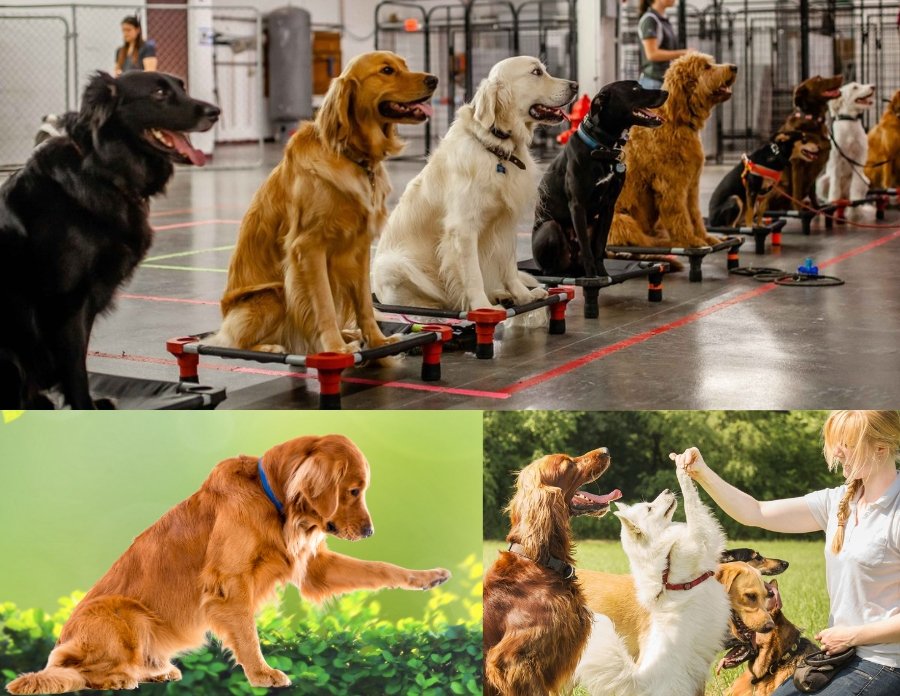Introduction:
Training your dog is an important part of responsible pet ownership and can benefit both you and your furry companion. Not only will training help your dog learn to behave properly and follow rules, but it can also strengthen the bond between you and your dog. In this article, we will provide a variety of tips and techniques to help you effectively train your dog. From teaching basic obedience commands to addressing behavior problems, we’ve got you covered. So let’s get started on the path to a well-trained and well-behaved dog!
Training your dog can be a rewarding experience for both you and your furry friend. Not only does it strengthen the bond between you, but it also helps your dog learn important life skills and can prevent behaviour problems from developing. Here are some tips to help you get started with dog training:
Tips
- Choose a positive reinforcement training method: Positive reinforcement training is a kind and effective way to teach your dog new behaviors. When your dog does something you like, you can reward them with treats, praise, or toys to reinforce the behavior. Avoid using punishment or physical force, as this can cause fear and aggression in your dog.
- Start with simple commands: Begin by teaching your dog simple commands such as “sit,” “stay,” and “come.” These commands are the foundation for more advanced training and can help you communicate with your dog effectively.
- Be consistent: Consistency is key when it comes to training your dog. Use the same words and hand signals for each command, and be sure to reward your dog every time they perform the behaviour correctly.
- Practice regularly: Training should be a part of your daily routine with your dog. Set aside a few minutes each day to practice commands and work on new behaviour.
- Stay patient: Training can be a slow process, and it’s important to be patient with your dog. Don’t expect them to learn everything overnight, and be sure to praise and reward them for their efforts.
Conclusion:
In conclusion, training your dog can be a fun and rewarding experience for both you and your furry friend. By using positive reinforcement techniques, starting with simple commands, being consistent, practicing regularly, and staying patient, you can effectively train your dog and strengthen the bond between you. With time and dedication, you can help your dog become a well-behaved and obedient companion.
FAQS:
Here are some frequently asked questions about dog training tips:
- What is positive reinforcement training? Positive reinforcement training is a kind and effective way to teach your dog new behaviors. When your dog does something you like, you can reward them with treats, praise, or toys to reinforce the behavior. This helps your dog
- associate the reward with the desired behavior, making them more likely to repeat it in the future.
- At what age should I start training my dog? It’s never too early or too late to start training your dog. Puppies can start learning basic commands as early as 8 weeks old, but older dogs can also learn new tricks and behaviors.
- How long should I spend training my dog each day? The amount of time you spend training your dog each day will depend on your schedule and your dog’s needs. A general rule of thumb is to set aside at least 15 minutes each day for training. You can break this time up into shorter training sessions throughout the day or have longer, more focused training session.
- How do I know if my dog is ready to learn a new behavior? There are a few signs that your dog is ready to learn a new behavior. They may be paying attention to you and looking at you for cues, they may be relaxed and not distracted, and they may be excited and motivated to learn.
- What should I do if my dog isn’t responding to training? If your dog isn’t responding to training, there could be a few reasons. They may be tired, hungry, or not in the right mindset for training. Make sure your dog is well-rested and well-fed before training, and try to choose a quiet, distraction-free environment for training. If your dog is still not responding to training, it may be helpful to seek the advice of a professional dog trainer.


